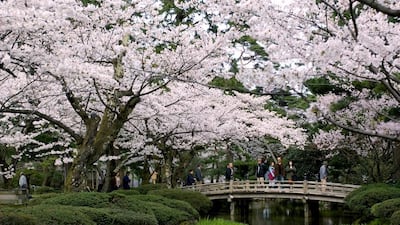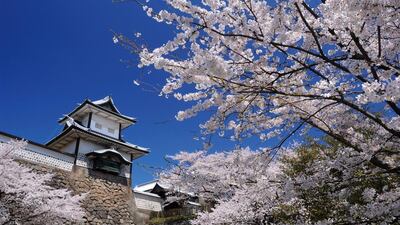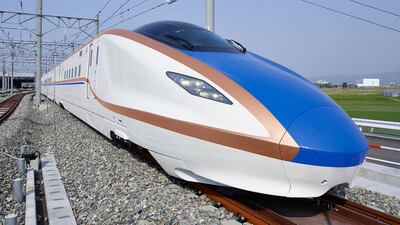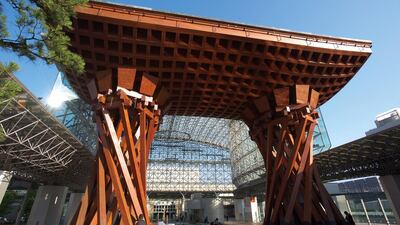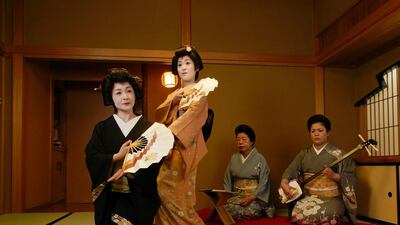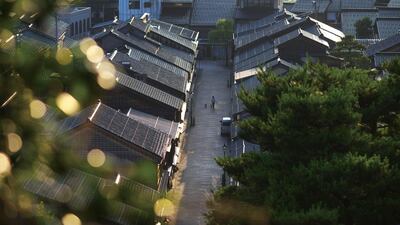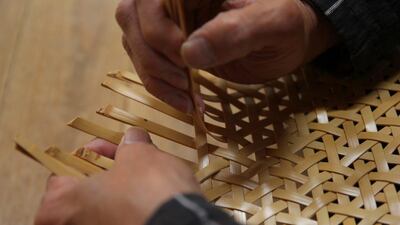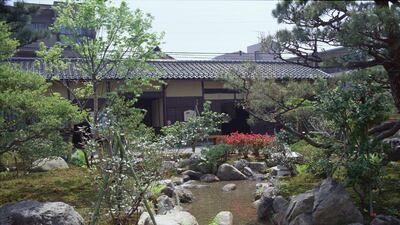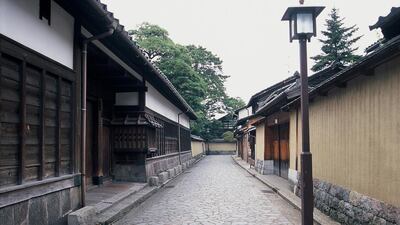“I’m sorry, sir,” the receptionist behind the desk at the Four Seasons Hotel in Tokyo beams at me. “Your room isn’t ready. But I could give you one now if you don’t mind it overlooking the train tracks?”
Normally, you’d go to get a coffee, maybe walk round the block, read a newspaper or check your emails on an iPad in the lobby.
But this time, I'm glad my room has an unobstructed view towards Tokyo's main station. There, on the other side of my solidly soundproofed windows, a sleek, white Shinkansen "bullet train" glides past every five minutes. In my jet-lagged state, in the twilight of this Blade Runner-esque metropolis of 13 million souls, it's a beguiling sight.
Tokyo station itself is a frightening place to be on the first full day of a trip to Japan. It’s beyond frenetic, even outside of rush hour. Countless warrens lead towards subterranean restaurants, shopping malls and, eventually, platforms; so many platforms. It’s overwhelming, even with English-language signs dotted about.
But with the hand-holding guidance of the hotel concierge, I’m led towards my 10.32am departure to Kanazawa. I line up at the precisely allocated spot on the platform for the shiny, spanking-new, blue-and-gold Hokuriku Kagayaki Shinkansen.
Since last month, this sleek, 260-kilometre-per-hour beauty has slashed the travel time from the capital to the city of Kanazawa on Japan’s west coast by almost half, to just two-and-a-half hours.
Why visit Kanazawa? The city of about 500,000 people is compared by some to Florence, Italy, as a spot where, hundreds of years ago, culture and the arts flourished.
From the 1500s, it fell under the control of the Maedas, the second largest clan in feudal Japan at that time. With the patronage of Toshiie Maeda, who died in 1599, Kanazawa became famous throughout the country for the production of gold leaf, lacquerware, silk fabrics and pottery – industries that continue to this day, often under the control of the direct descendants of those first artisans.
Nothing could contrast more with the whizz-bang technology of the Shinkansen. Within seconds of leaving the platform in Tokyo, we seem to be going full pelt, but even at speeds of more than 200kph, it takes a full half-hour to leave Tokyo’s sprawling suburbs. A trolley service provides coffee, cake, dried squid snacks and Hello Kitty towels, as woods, rice terraces, small towns and, near Nagano, ski fields blur past.
As a British traveller, the contrast with train travel in my home country is stark: not just the speed, punctuality and bowing train guards, but also the library-like air of tranquillity – no one is bellowing their weekend plans down the phone to all and sundry – and toilet seats that rise to greet you as you enter, with separate cubicles for men and women.
Light rain falls as the train draws into Kanazawa. The grey, misty outlook somehow only adds to the atmosphere, though, as I seek out a noodle restaurant for lunch near the station, then stroll among a sea of umbrellas through the serene Kenroku-en Gardens, which date back to feudal times.
My guide is the historian Jeremy Phillipps, originally from New Zealand, but who’s lived locally for more than 20 years. He tells me Kenroku-en is considered by many Japanese to be one of the top three public gardens in the country (the others are in Okayama and Mito), with six “perfect attributes” – spaciousness, seclusion, antiquity, artificiality, panoramic views and waterways – all embodied here.
In winter, the garden’s tall trees are protected by conical canopies of suspended ropes that shield branches from the weight of snow, while in spring, many thousands of people gather to enjoy the short but spectacular bloom of cherry blossoms and shoot selfies in front of the two-legged Kotoji-Toro stone lantern that has become a symbol of the city.
Next door is a restored 16th-century castle. It doesn’t take too much imagination to picture samurai – the feudal warriors whose lives were guided by noble codes of chivalry – parading around the immaculately manicured grounds.
I learn about their strictly regimented lifestyle in the Naga-machi district, which is bounded by two old canals, and perfect for an aimless meander. Here, the layout of many of the small streets hasn’t altered in 350 years, and you can spot authentic samurai houses from their mud walls and distinctive tiling, said to resemble the topknot hairstyle the men sported.
A short cab ride away is the early-19th-century neighbourhood of Higashi Chaya Gai, which was established for geisha to entertain their wealthy patrons. Its stone streets fronted by traditional wooden buildings are busy with tourists during the day, but more atmospheric at night, when the lanes are deserted and lit by lanterns.
Although you can organise a fairly pricey private geisha evening any time of the year, from mid-March to early May there’s a “Spring Geisha Evening” with Lady Baba (as she calls herself) and her girls: an English-language performance of traditional dances, songs and musical instruments for 50 guests in one of the area’s authentic two-storey houses.
If you do come in the daytime, shops selling gold-leaf products are dotted about. Up to 98 per cent of Japan’s intricate gold-leaf-ware is made in Kanazawa, and you can either buy a piece ready-made or have a go at stencilling something yourself and seeing behind the scenes how the experts do it.
The chance to interact with local artisans is what draws many here, and I’m guided to some by an American, Lauren Scharf, who has lived in the city on and off for seven years, and now runs the bespoke tour operator The Art of Travel.
Through her, I spend time in the home of Nakamura Takuo, whose glazed-porcelain pieces can be found in the Metropolitan Museum of Art in New York, and who has collaborated with the English pottery company Wedgwood.
“Toshiie Maeda brought artists and artisans from all over Japan,” Takuo explains, cross-legged, over green tea and dainty sweets, “and because of the small size of Kanazawa, people of different classes met and mingled easily. So you had merchants and samurai and craftsmen all practising their arts, and it was a much less divided social strata than Kyoto or Edo [modern-day Tokyo]. That is a legacy that continues.”
A 30-minute drive away into hills still dappled with spring snow, Scharf takes me to meet the bamboo weaver Chifuyu Enomoto, whose exquisite pieces take more than three months to make and sell for Dh18,000 and more.
In his uncluttered home and studio, Enomoto cuts then whittles down strands of bamboo until the strips are a uniform width and length, before inviting me to join him in weaving a simple bowl.
Pieces of bamboo are slipped under and over each other, then twisted, looped and pulled through holes to form a solid structure. I, however, have all the manual dexterity of a rhino, and make heavy weather of it all.
“Has anyone ever been this bad?” I ask the master, expecting a polite verbal pat on the back for at least trying. “It’s pretty awful,” comes the reply, via Scharf, as they both try hard not to giggle. I’m probably better off sticking to my new favourite Japanese pastime: trainspotting.
weekend@thenational.ae
Follow us @TravelNational
Follow us on Facebook for discussions, entertainment, reviews, wellness and news.
